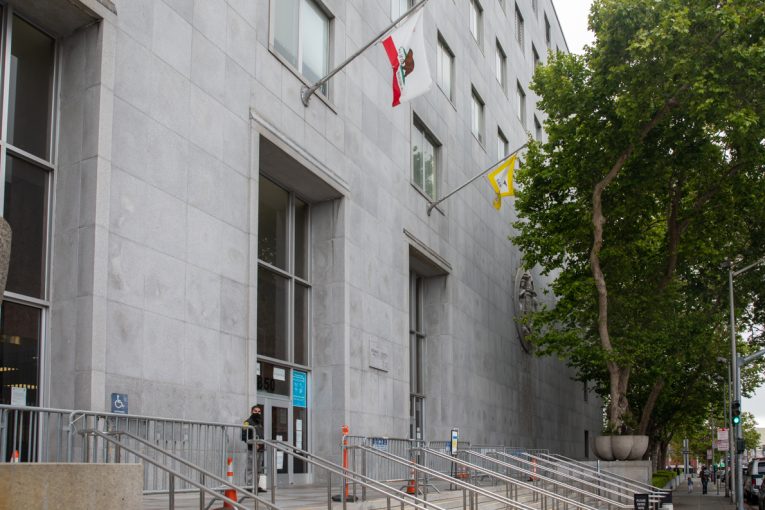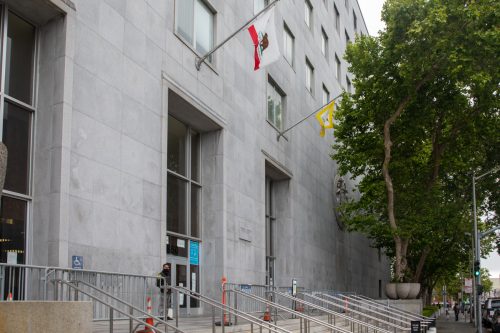

By JoJo Kofman
SAN FRANCISCO, CA – A preliminary hearing investigating a murder that occurred on July 5, 2020, proceeded into its fourth day Monday in San Francisco County Superior Court, and it’s expected to be ongoing much of this week.
Most of Monday was filled with descriptions of witness Devanshi Desai’s lab reports that analyzed DNA and evidence items associated with the case.
Toward the end of the court session, defense attorney Pamela Herzig questioned the process involved in the DNA examination reports.
The co-defendants of the case are two young Black men, Sincere Pomar and Stevie Mitchell. The victim of the homicide is the cousin of the husband of newly-appointed San Francisco District Attorney Brooke Jenkins.
While the preliminary hearing started with Chesa Boudin as the DA last Wednesday, Jenkins’ appointment Thursday as the new SF DA, who has made very public statements about the case and alleged killers, posed some potential problems, according to defense attorney Herzig, who argued “this leaves the distinct impression for anyone that’s looking (the accused) won’t receive a fair trial.”
Deputy District Attorney Aaron Laycook called Desai as a witness, who works in the forensic biology unit at the San Francisco Police Dept. criminology laboratory. Desai produced a series of lab reports in the homicide case, in which she examined multiple evidence items.
As the criminalist who authored the reports, Desai produced an initial report on July, 28, 2020, and then produced more than three supplemental reports generated on later dates. Evidence items that were examined in the report were a bag that contained firearm casings, clothing, a ski mask and keys.
DDA’s Laycook questioned Desai for several hours, and one noted evidence item was a “Gucci left shoe.” Desai explained that the shoe had four DNA contributors.

Desai then explained, the likelihood of obtaining the DNA results were 551 septillion times greater if the DNA came from Mitchell and three unrelated random persons, than if it came from four random unrelated persons, suggesting the results supported the inclusion of Mitchell’s profile.
Another evidence item examined by Desai was a Gatorade bottle. Based on a sample from inside the Gatorade bottle, compared to Pomar’s profile, the likelihood of obtaining the DNA results are 17,000 times greater if the DNA came from three unrelated random people than if it came from Pomar and two unrelated random persons. Thus, this likelihood ratio supported the exclusion of Pomar’s profile.
Desai spent hours describing an extensive list of analyzed profile items which exclude and include both of the accused profiles.
During the last part of the court day, defense attorney Herzig started her cross-examination of Desai. During defense attorney Herzig’s questioning, Desai explained that as she moved from the initial report to supplemental reports, chronological reports were added by people. Herzig explained that these additional reports, which dictate who is named as suspects, were not written by Desai herself.
When defense attorney Herzig asked Desai if she knew who else provided reports such as chronological, incident, or Form 64s, Desai stated, “I’m not sure if anyone else is added. The supervisor gets that information.”
Defense attorney Herzig explained the 64 form dictates which evidence items are requested for examination, and the supervisor reviews these requests to decide which should be tested, adding that while the initial report said the suspect was unknown, the testing they did was compared to Mitchell’s profile.
When defense attorney Herzig asked why they tested for Mitchell’s profile, Desai said, “The investigator told me to do that reference sample of Mr. Mitchell.”
Defense attorney Herzig concluded that in various cases the suspects examined in the report were dictated by the external 64 forms or incident reports.
The mother of Mitchell noted outside of court, “If they can fill out a 64 form every time they get a piece of evidence confirming the suspect’s DNA then that’s not credible.”
She later stated “they were arresting a year after the incident, so they collaborated a bunch of evidence that hits off specific DNA which makes it seem like DNA from the crime scene.”
Mitchell’s music manager, who said he was close with Mitchell and hung out with him frequently, said many times they saw an unmarked car following Mitchell or in front of his house. Mitchell’s music manager explained that all of those incidents happened before his arrest.
Ummm clearly a conflict of interest !
Great coverage of this case JoJo… I look forward to seeing how it all plays out.
Wonderful article Jojo!
I found it interesting that they found out that some of the reports were not written by Desai; you did a great job at articulating your analysis and exlaning the situation concisely without using unnecessary quotes.
Another thing that stood out for me was that the defense attorney questioned the credibility of the process regarding evidence. Here we can understand that there I a conflict of interest between the two parties.
Finally, it is deplorable to learn that they put forward misleading pieces of evidence to make it look like outside evidence was correlated/was from the crime scene.